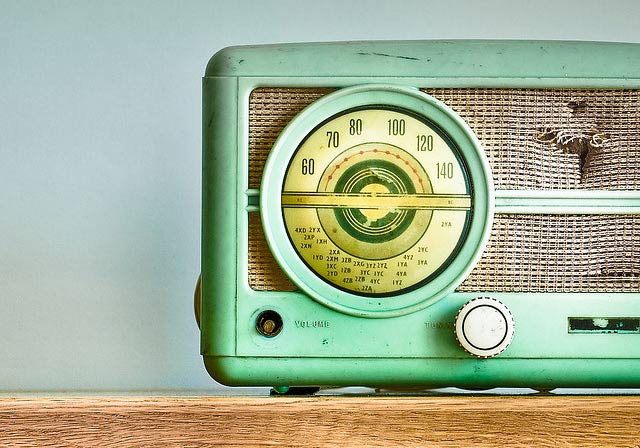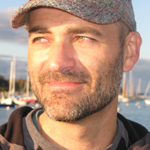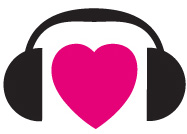
Photo courtesy of CubaGallery via Creative Commons
Should your organization incorporate audio into your digital communications toolkit?
Guest post by Will Coley
Producer-Founder, Aquifer Media
 If nonprofits want to learn how to create content that both engages audiences and creates devoted supporters, we need look no further than the gold standard offered each day by public radio. Think about it: Radio producers can create stories that keep us in the car for “driveway moments” even when we’ve reached home, just so we can hear the ending.
If nonprofits want to learn how to create content that both engages audiences and creates devoted supporters, we need look no further than the gold standard offered each day by public radio. Think about it: Radio producers can create stories that keep us in the car for “driveway moments” even when we’ve reached home, just so we can hear the ending.
 Public radio has created legions of devotees who give money for something they can already get for free. At the same time, we’re in the middle of a renaissance of digital audio online and via mobile technology.
Public radio has created legions of devotees who give money for something they can already get for free. At the same time, we’re in the middle of a renaissance of digital audio online and via mobile technology.
To take advantage of this exciting and pivotal moment, nonprofits should consider adding audio storytelling to your digital communications toolkit. Here’s why.
Listening (or why audio is special)
Listen to this 3 1/2 minute clip from WNYC and think about what you can see in your mind’s eye.
Can’t you almost see what reporter Marianne McCune is experiencing? Radio requires listeners to use their imagination, bringing us emotionally closer to the story. Add to this that audio is often more intimate than other media. We often listen alone or on headphones, putting these voices directly inside our skulls. Audio is also better suited to our busy multitasking lives: I can listen at the gym, while washing dishes or checking email.
Another thing to consider about the WNYC story above: I doubt that Margaret Maynard would have let the reporter into her apartment with a video camera (she was in her house dress after all). A microphone is far less intimidating and in some ways offers a level of confidentiality. Without a camera in the way, it’s far easier for the interviewer to maintain eye contact with the person being interviewed. Because of this, I think people open up in different ways and get to the heart of the story even more quickly.
Storytelling
Listen to this one-minute “sonic i.d.” from Atlantic Public Media on Cape Cod.
Even in these 60 seconds, there is an anecdote that reveals the mechanics of effective storytelling.
Our brains are hard-wired for stories: We can’t stop ourselves from listening or watching a compelling story. But what is a good story?
Ira Glass says that the structure of every story on “This American Life” is a “series of actions where someone says ‘This happened, then this happened then this happened’ and then there’s a moment of reflection about what that sequence means and then onto the next sequence of actions.” This “moment of reflection” also interests Harvard professor Marshal Ganz because it reveals shared values that knit us together. Because of this, he argues the personal stories of individuals responding to challenges (“Story of Self”) is the bedrock of effective community organizing.
Character is most important to independent radio producer Samantha Broun, who has worked on multimedia projects with nonprofits. “I have found that the most powerful testimonial I can provide for nonprofits is a story of someone (a character) whose life has been effected by that organization. No talking heads. No scripted bits. But real, raw, emotional tape from a person whose life has been changed.”
To tell the story of your organization’s work, look for the individual experiences of a program participant or a supporter that illustrate the values you’re working for. At the same time, respect their ownership of stories and think of “facilitating” others in telling their stories directly to a larger audience online.
Producing
Listen to this story I made about Antoine Jenkins canvassing for Barack Obama in Las Vegas, Nev.:
Like many other radio producers, I used a digital recorder, headphones and an omnidirectional microphone. Many reporters are now using smart phones to record audio, especially in situations where bulky recording equipment isn’t feasible. SoundCloud’s app on iPhone and Droid is an incredibly easy way to record and post directly to the Web and other social media (think Instagram for audio). This could be a great tool for nonprofits to use at community events or gatherings.
Here are two practical tips I’ve learned from recording interviews:
- Get close to what you’re recording but not too close. It’s best to place your microphone or smartphone four inches below the mouth of the interview subject, aka ice cream cone distance. This helps you avoid recording the popping that the P sound often makes.
- Be aware of surrounding noise. Ambient noise can often be an important part of radio stories, especially when you’re capturing live action. But for interviews not directly related to action, it’s best to record in a quiet non-echoey space and later gather ambient sounds. Carpets and drapes often help absorb sound. Wearing headphones helps ensure that you get great sound with digital recorders.
To edit the audio you gather, you’ll need audio editing software. GarageBand and Audacity are free. I use Hindenberg but many radio producers prefer Pro Tools or Audition. To learn more about producing great radio stories, check out Transom.org and Rob Rosenthal’s Howsound podcast. Rob teaches the excellent Transom Story Workshop (which I attended in 2011 to start learning the art of radio storytelling).
Sharing
Listen to this one-minute story “First Love and 27 Other Firsts” by my radio-producing friend Whitney Jones.
This story has been a hit on Cowbird, an online story sharing community. Whitney also shared it on SoundCloud and thePublic Radio Exchange. You can embed tracks from these sites on other websites like blogs.
As part of a project funded by SoundCloud, I embedded stories on this website to honor Studs Terkel’s book. I see these as “audio blog posts” or “audio posts” rather than a “podcast.” Not only does it sound less intimidating and time intensive, a “post” or “story” implies a one-off that’s part of a larger content strategy using other media. Also with SoundCloud, listeners can subscribe for updates via RSS and iTunes.
Public Radio Exchange is a great platform to get your stories directly on public radio. Whitney sold his story to the Public Radio Remix, KFAI and Third Coast Festival/Re:sound. Obviously stories from your organization won’t sell if they’re straight up promotions or advocacy. To help navigate journalistic concerns, you could invite an experienced independent radio producer to help tell your story and market it through PRX.
So in short: Just do it! Experiment! Start listening, storytelling, producing and sharing audio stories and see if something miraculous happens.
For an even more audiovisual presentation of this information, check out this Prezi.
Will Coley designs social media content strategies and digital storytelling for groups such as Public Interest Projects, Freedom from Fear awards, Appalachian Carbon Partnership and Detention Watch Network. Will was selected as a 2012 SoundCloud Community Fellow to develop the Working Now project. This article originally appeared on the NTEN blog.
Related on Socialbrite
 This work is licensed under a Creative Commons Attribution-NonCommercial 3.0 Unported.
This work is licensed under a Creative Commons Attribution-NonCommercial 3.0 Unported.








